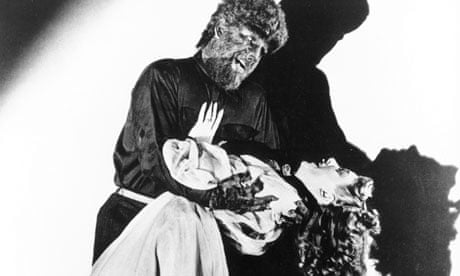Werewolves walked the forests of Renaissance Europe, at least according to the 15th-century Neapolitan writer Jacopo Sannazaro. In his book Arcadia, he imagines a community of shepherds singing songs as they tend their flocks in a dreamlike countryside. One character is a shepherd priest, and in words to thrill any modern horror fan he boasts that at night he sometimes takes on the form of a wolf. He undergoes this transformation not to ravage the flocks, but rather to walk with the wolf pack and discover its intentions. He does espionage in the world of animals.
Is this apparent belief in werewolves a joke on Sannazaro's part? Not entirely, for the idea that some people can take on the shape of wolves was not invented by Universal Studios. Unlike those other horror classics Dracula and Frankenstein, the black and white Lon Chaney film The Wolf Man was not based on a famous novel. The werewolf films that emulate its success do not originate in 19th-century romanticism. On the contrary, the myth of the werewolf is rooted in western European folklore, which even surfaces in the high culture of the Renaissance.
A woodcut by the great German Renaissance artist Lucas Cranach the Elder, dating from 1512, takes the werewolf out of Sannazaro's classical Arcadia and sets it crawling in the German forest where it belongs. In this horrific work of art we see peasant legends, fireside warnings of Something in the Woods, come graphically alive as a woman screams at a cottage door while a man crawling on all fours, his hands claw-like and bearded face bestial, carries off one of her children in his mouth. Cranach's Werewolf is a raw translation of folklore into art. The legend it depicts was widespread in Old Europe. In France right up until the 18th century people were regularly accused of being werewolves. It is not hard to imagine how the wolf-haunted forests that once covered northern Europe left behind a residual fantasy of animal transformation, and indeed, you can see ice age depictions of half-human, half-animal beings in caves in France.
The images of animal-men in ice age cave art have been interpreted as portrayals of shamans, the shape-shifting, animal-conversant priests who according to anthropologists can be found in most "hunter gatherer" societies. In fact the shepherd priest in Sannazaro's Arcadia seems very much like a shaman. But if this is the case – if in this influential Renaissance text werewolf legends and the ancient ideas of shamanism in which they originate fuse with classical myth – what does this say about the human-animal hybrids from Greek myth that were so potently portrayed by Renaissance artists?
In Correggio's magical 16th-century painting Venus, Satyr and Cupid, in the Louvre, for instance, a goat-legged Satyr spies on a sleeping woman. The woods, soft and dreamy, enfold this unearthly moment, when a creature who is as much animal as human beholds a beauty that seems divine. Such rustic monsters richly populate the art of the Renaissance and Baroque ages, spying on nymphs, sharing the rites of Bacchus. To us they are marvels of the artistic imagination, but to an age that believed in werewolves and many other prodigious beings and uncanny phenomena, they were perhaps a bit more than that. There were, once, more things in heaven and earth than are dreamt of in our philosophy.

Comments (…)
Sign in or create your Guardian account to join the discussion